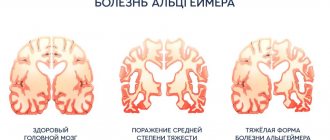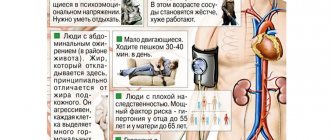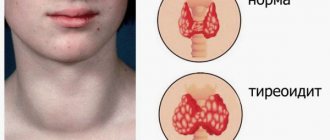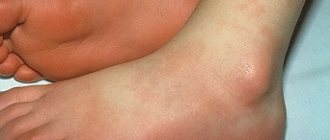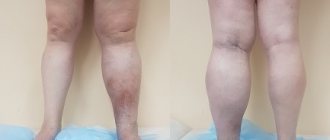Almost everyone is familiar with the feeling of shortness of breath when running or climbing stairs.
But there are cases when shortness of breath occurs when walking only a few tens of meters or even at rest. If in such situations it becomes difficult to breathe, then the matter is serious.
Breathing is a natural process, so we don’t notice it. But we immediately feel if there is something wrong with our breathing. Especially when, out of the blue, we start to choke. The brain receives a corresponding signal, and our breathing quickens, and this process cannot be controlled by consciousness. Its frequency and rhythm, the duration of inhalation or exhalation have changed - in a word, you feel that something is clearly wrong with your breathing. This is shortness of breath.
Current problem
For most people, heartburn is simply an occasional discomfort. Approximately 20% of the population of highly developed countries experience it at least once a month.
But for the 6% of people who have a chronic form of heartburn known as gastroesophageal reflux disease (GERD), unresolved (untreated) symptoms can lead to various health complications. People with erosions in the lining of the esophagus due to acid reflux often do not realize the harm of GERD until they have advanced stages of the disease.
If you experience frequent or prolonged heartburn (twice a week on a regular basis), consult your doctor. Here are nine reasons why you shouldn't ignore the symptoms of gastroesophageal reflux disease.
Possible causes of the disease
Often a person may feel: “I’m suffocating, as if there’s a stone on my lungs.” In good health, this situation should not occur in a normal state of rest or in the case of light exertion. The reasons for lack of oxygen can be very diverse:
- strong emotions and stress;
- allergic reaction;
- lung disease;
- diseases of the cardiovascular system;
- physical inactivity;
- compression of the walls in the sternum;
- obesity;
- bad habits such as smoking and alcohol abuse;
- hernia;
- sudden change in environment.
Despite such a large list of possible reasons why it may be difficult to breathe, surfactant is almost always at the root of the problem. If we consider from a physiological point of view, this is the fatty membrane of the inner walls of the alveoli.
The alveolus is a vesicular depression in the lungs and is involved in the respiratory act. Thus, if everything is in order with the surfactant, any diseases on the lungs and breathing will be minimally reflected.
Therefore, if we see people in transport, pale and in a faint state, most likely it’s all about the surfactant. When a person notices: “I yawn too often,” it means the substance is not being produced correctly.
Development of inflammation in the esophagus (esophagitis)
In gastroesophageal reflux disease, food, acid, and digestive juices back up into the esophagus. Over time, this causes irritation and swelling of the mucous membrane lining the inside of the esophagus. This is esophagitis. If acid exposure in the esophagus is observed for just a few weeks, then inflammation of the mucous membrane can already develop. This can cause discomfort and even pain along the midline of the abdominal wall, “in the pit of the stomach,” where the right and left ribs meet at the sternum. This inflammation makes the esophagus vulnerable to even more dangerous conditions - erosions or scars.
Esophageal stricture
If esophagitis continues for too long, the resulting scar tissue can narrow the esophagus. This stricture can lead to difficulty passing and swallowing food, which can become stuck at the level of scar tissue, causing pain.
Large pieces of food may become stuck and this situation may require endoscopic intervention to remove them. The stricture may cause frequent choking when eating. Because of this, patients often refuse to eat and lose a lot of weight.
Stricture is treated by widening or stretching the esophagus (bougienage or dilatation). These treatment procedures can have multiple effects on the stricture. But taking stomach acid blockers (proton pump inhibitors, PPIs, or H2 blockers) may prevent scarring in the esophagus from returning in the future.
Mechanism and reasons
The respiratory system is one of the few vital systems of the human body that can be consciously regulated. At will, a person can not only inhale or exhale more or less often, but also form new breathing habits through targeted training.
It is this connection with the conscious area of the mind that causes emotional arousal to increase, and emotional depression to decrease, the frequency and depth of unconscious breathing. Due to the close relationship between the psycho-emotional and respiratory spheres, some experiences can cause such serious disturbances in the usual breathing rhythm as DN.
In particular, this kind of experience includes fear, anxiety, panic, hysterical attack, excitement and other similar emotions that provoke a biochemical imbalance of calcium and magnesium in the blood, which leads to disruption of the respiratory enzymes that provide pulmonary oxygen oxidation.
The result of these processes is hyperventilation of the lungs - a condition in which the level of carbon dioxide in the blood decreases due to its excessive release. A lack of CO₂ (hypocapnia) causes an increase in blood pH (alkalosis) due to excess accumulation of alkaline substances.
Why is high blood pH dangerous?
The main danger of alkalosis is the progressive inhibition of the activity of the respiratory center, as a result of which a so-called vicious circle arises when disturbances in the respiratory rhythm cause high blood pH, and high blood pH suppresses the functioning of the respiratory system.
Alkalosis also provokes other dangerous disorders:
- decreased blood pressure;
- decrease in the intensity of blood circulation, including cerebral circulation;
- the appearance of muscle hypertonicity, turning into cramps;
- increased heart rate;
- exacerbation of gastrointestinal diseases, constipation;
- frequent dizziness, sometimes with fainting;
- general deterioration of brain activity, leading to decreased intellectual abilities, decreased concentration and memory problems.
Throat and voice problems
The main symptom of gastroesophageal reflux disease is heartburn, but not all people feel or report it. They may have other symptoms that are more difficult to diagnose. Doctors call these cases "silent reflux," or asymptomatic reflux. The patient may not have heartburn as classically described in textbooks, but they may have various other problems that occur outside the esophagus, such as hoarseness, voice changes, sore throat, or chronic cough. They feel as if there is a lump or hair in their throat and constantly have to clear their throat by coughing and clearing their throat.
Types of shortness of breath and other data on the disease
Dyspnea or non-medical language
– shortness of breath is a disease that is accompanied by a feeling of lack of air. In the case of heart problems, the appearance of shortness of breath begins during physical exertion in the early stages, and if the situation gradually worsens without treatment, even in a relative state of rest.
This is especially evident in a horizontal position, which forces the patient to constantly sit.
| Mechanical blockage | Anemia | Ischemic disease | Traumatic brain injury | |
| Character of shortness of breath | Mixed | Mixed | It’s hard to breathe, breathing with bubbling sounds | Mixed, arrhythmic breathing |
| When does it occur | When a foreign body blockage occurs | Some time after the start of observation | Most often at night | After some time has passed since the injury |
| Duration, course | Immediate sudden onset of shortness of breath | Gradual long-term progression | In the form of attacks lasting from a couple of minutes to several hours | Depending on the degree of brain damage |
| Appearance | Depending on the severity of breathing difficulty | Pale skin, cracked corners of the mouth, brittle hair and nails, dry skin | Bluish hands and feet, cold to the touch, possible swelling in the abdomen, legs, swelling of the veins of the neck | Convulsions and paralysis are possible |
| Position | Any | Any | Half-sitting or with legs down | Any |
| Sputum | Absent | Absent | Heavy phlegm | Absent |
| Associated conditions | In cases where the foreign body has been present for more than a day, inflammation may begin. | Difficulty swallowing dry food, constipation | Heart diseases | Trauma and loss of consciousness |
| Age | Most often children's | Any | Elderly and middle | Most often middle and young |
Manifesting itself as attacks of severe shortness of breath most often at night, the deviation may be a manifestation of cardiac asthma. In this case, breathing becomes difficult and this is an indicator of inspiratory dyspnea. The expiratory type of shortness of breath is when, on the contrary, it is difficult to exhale air.
This happens due to a narrowing of the lumen in the small bronchi or in case of loss of elasticity in the lung tissues. Directly cerebral dyspnea manifests itself due to irritation of the respiratory center, which can occur as a result of tumors and hemorrhages.
Difficulty or rapid breathing
Depending on the frequency of respiratory contractions, there may be 2 types of shortness of breath:
- bradypnea
– respiratory movements per minute of 12 or less, occurs due to damage to the brain or its membranes, when hypoxia lasts for a long time, which can be accompanied by diabetes mellitus and diabetic coma; - tachypnea
- shallow and rapid breathing (more than 20 respiratory movements per minute), accompanied by blood diseases, anemia or fever.
The main criterion that shortness of breath is pathological is that it occurs under normal conditions and light loads, when it was previously absent.
Breathing problems
If stomach acid accidentally flows into the windpipe after gastroesophageal reflux disease causes it to enter the esophagus, GERD can worsen asthma or pneumonia. Even without lung problems, GERD can cause shortness of breath and difficulty breathing. And treatment in this situation can be a double-edged sword. Because GERD medications, such as proton pump inhibitors, may actually increase the risk of pneumonia. (They can promote bacterial growth and suppress coughing, which is designed to help clear the lungs.)
Pay your doctor's attention to your lung function when treating reflux.
Conventionally, there are 3 types of shortness of breath
- inspiratory dyspnea (difficulty breathing) – more typical for heart disease
- expiratory shortness of breath (difficulty exhaling) – most often occurs in bronchial asthma due to spasms
- mixed shortness of breath (when both inhalation and exhalation are difficult) – characteristic of a variety of diseases
The most important method of combating shortness of breath is treating the disease that caused it. Once the specialist determines the cause, an effective treatment plan will be determined. For example, for coronary heart disease and myocardial infarction, treatment with tablets is often used. For bronchial asthma - regular treatment with inhalers. Since the main cause of shortness of breath in many cases is low oxygen levels in the body, oxygen therapy is one way to reduce shortness of breath.
Esophageal ulcers
Stomach acid can erode the lining of the esophagus, causing sores and ulcers. Esophageal ulcers are different from stomach ulcers, which are usually caused by bacteria. People with wounds and sores may spit up blood and may also vomit blood. They may see blood in their stool. The blood may be red, cherry red, or like coffee particles. In stool, blood from the esophagus and stomach usually turns black when passing through the small intestine, the color and appearance of oil - viscous, slippery, and difficult to wash off.
Contact your doctor immediately if you have these symptoms. Endoscopy can detect ulcers of the esophagus. Acid-blocking or acid-lowering medications may make them disappear.
Barrett's esophagus
If left untreated for many years, persistent acid reflux can form changes in cells known as Barrett's esophagus, which is considered a precancerous condition. This condition does not cause many symptoms other than those of reflux. A doctor can diagnose it by performing an endoscopy.
If you have heartburn more than twice a week for a long time, or if you have symptoms of gastroesophageal reflux disease that are getting worse or you have discovered new ones that you didn't have before, these are all reasons to get checked and have an endoscopy.
Esophageal carcinoma
In very serious cases, untreated gastroesophageal reflux disease (and subsequent Barrett's esophagus) can lead to esophageal cancer. The main risk factors are alcohol consumption, smoking, poor nutrition, and chronic esophageal diseases with reflux.
Symptoms include weight loss, trouble swallowing, or gastrointestinal bleeding. This is something that happens over decades of untreated reflux (30-40 years), so those who are 30 and otherwise healthy have no reason to suspect cancer. But if you're over 50 and have had heartburn for years and suddenly lose weight, for example, this is definitely what your doctor will suspect first.
Shortness of Air: Case Studies
Woman, 32 years old, entrepreneur.
From the anamnesis: over the past five to seven years, I worked very hard, practically never rested. A month before the first complaints appeared, she gave birth to a child (caesarean section). She did not tolerate anesthesia well (long awakening, headaches, drowsiness). A week after giving birth, an episode of “shortness of air” occurred.
I contacted our clinic in November 2011. The main complaint is a constant feeling of shortness of breath when breathing, aggravated by excitement, while talking with other people (“I can either breathe or talk”), as well as when walking, in enclosed spaces or public places.
Also about chills, unstable blood pressure, rapid resting pulse (up to 130 beats per minute). I developed a cold allergy (nasal congestion when going outside in the autumn-winter period).
The woman underwent 2 courses of therapy. There are currently no symptoms.
Female, 27 years old, journalist
The onset of his illness is associated with the stress he experienced. Before her eyes, her father suddenly dies, who, in her words, was an absolutely healthy person.
Just a few days after the funeral, she develops a classic panic attack with severe weakness, a feeling of shortness of breath when inhaling, shortness of breath and palpitations. Shortness of breath also tormented the patient during the interictal period. So, at the clinic appointment, she was noticeably breathing heavily, spoke with pauses, resting for a long time after several spoken phrases.
After the examination, a diagnosis of severe dysfunction of the autonomic nervous system was made.
After the first course of therapy, panic attacks stopped completely. A repeated course helped to cope with residual manifestations of the disease in the form of episodes of lack of air when breathing.
Feelings of fear and anxiety Presyncope, weakness Sweating, sweating, heavy sweat Prolonged low-grade fever Sleep disorder, insomnia, drowsiness Chronic fatigue syndrome Headaches Constant heaviness in the head
Muscle tone, spasm of the neck muscles Weather dependence Lack of air, heavy breathing Strong heartbeat, rapid pulse Burning in the abdomen, pain in the stomach Discomfort in the intestines, diarrhea Urinary incontinence Blurred vision, vision problems




